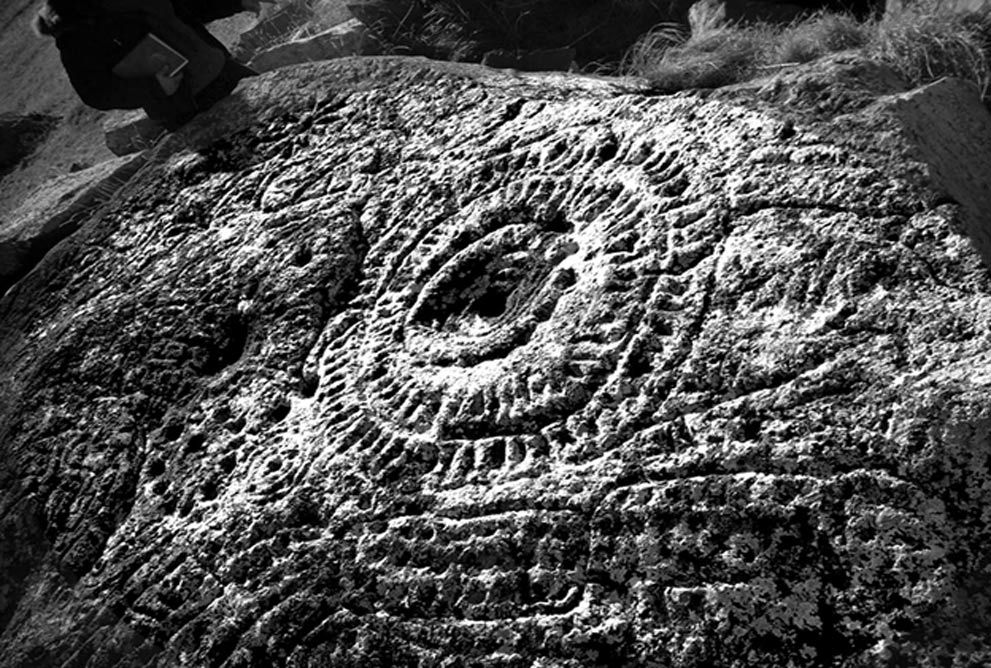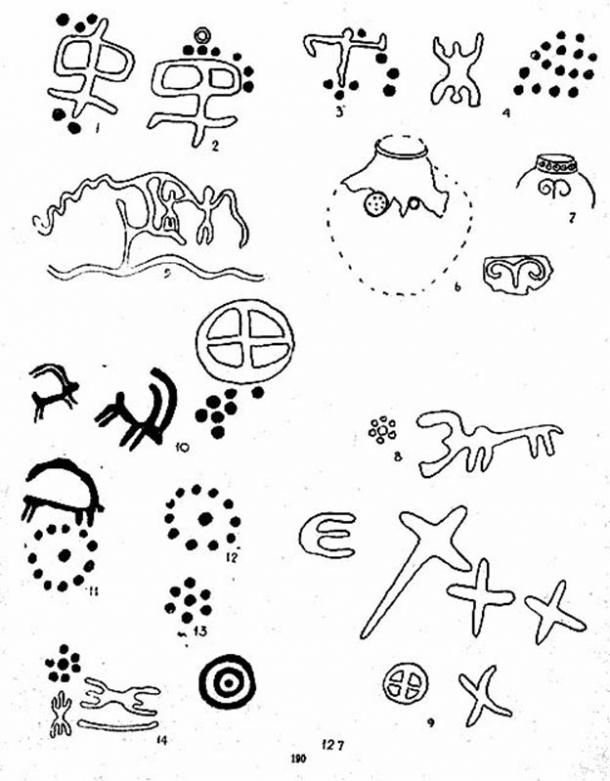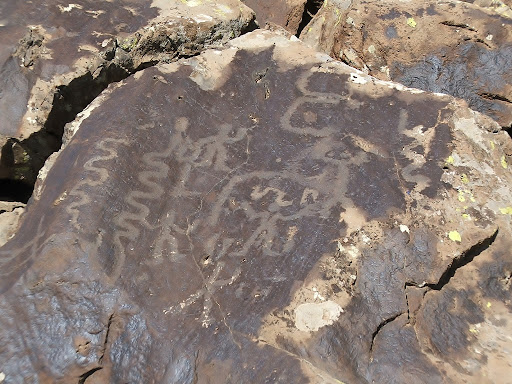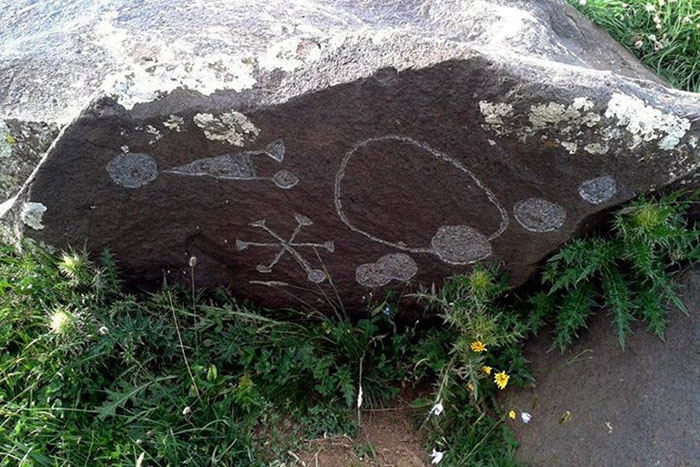Ancient Rock Art of Armenia

Armenia is home to some of the oldest ancient rock art examples of the world, some dating back as far as 12.000 BCE.
The petroglyphs on the volcanic Gegham and Vardenis Mountains are the most “recent” ones, and they show a very unique and mysterious series of astrological rock art paintings, some made with a natural paint made of red volcanic mineral, others carved into the rock.
Discovered by architect Suren Petrosyan in the basin of Lake Sevam and along the slopes of Mt. Aragats, their chronology is still disputed by the scholars, as the hypotheses range from third to second millennium BCE, to the fifth to fourth millennium BCE, while there are experts maintaining they were created around the 10th millennium BCE. This is not surprising, since the study and chronology of rock art paintings is quite an intricate field.
The mountains where these astrological paintings were made are incredibly inspiring since the vision of the starry sky at night is crystal clear and gives us a hint of what our ancestors might have seen and decided to represent with their art.
As a matter of fact, at this altitude (1700 to 1800 meters, or 5500 to 5900 feet above sea level, and about 500 to 600 meters (1600 to 2000 feet) high from the neighboring countries), the ancient inhabitants of this area were surely able to witness the stars in a way that would give justice even to our modern magnifying devices.
The rock paintings that drew most of the scientists’ attention are undoubtedly the stellar maps located on the hill of “Sheikhi Chingil” in the Gegham mountains, and on the peak of Sevsar in the Vardenis Mountains.
Harutyun Martirosyan, an Armenian historian, and archaeologist concluded that the ancient culture that drew the paintings was indeed worshipping the heavenly bodies, and, in doing so, they were able to recognize the many patterns of the celestial world.
For instance, the experts point out how the carvings and paintings are obviously the consequence of accurate observations, and how the people who made those were able to understand not only the sun and the moon, but also the stars, planets, and constellations.
They were also meticulous observers of their movements, which helped them understand the passage of time, seasons, even hours.
Given these pieces of information, we are able to conclude that the observations and consequent understanding of the sky stemmed from cultic practices and religion.

The Ughtasar Petroglyphs

The Gegham mountains are not the only place where ancient rock art can be found in Armenia. As a matter of fact, Mount Ukhtasar, meaning “Pilgrim Mountain”, has rock carvings dating back as far as 12.000 BCE.

They are carved onto dark brownish-black volcanic stones left behind by an extinct volcano. Although the site was discovered in the early 20th century, it was not really studied until the 1920s and again in the late 1960s.
However, even though it has been studied, it is still not fully understood today.

